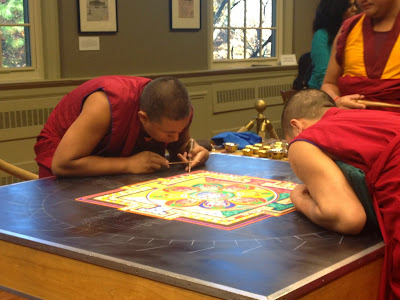The beginning of Advent is the beginning of the Church year. And like other New Years, it is a time to both look at the past and the future. The story of Christianity, depending on how one frames it, is one of looking to the past or looking to the future. Through grace, sins of the past are washed away, and we are given new life and promised new earth. We await Christ’s victorious return, the second coming, the restoration of creation to God. But return, second coming, restoration…all of those imply that what we anticipate once was already. We are not moving forward so much as arriving back home.
In the
nineteenth century, some Protestant groups began identifying as
restorationists, believing that they were returning Christianity to the beliefs
and practices of the earliest churches. But surely one could see the futility
in such a proclamation. 1,700 years had passed. Empires had risen and fallen.
What these nineteenth-century Americans thought they knew about first-century
Jews and Greeks was obscured by language, cultural differences, missing
information, and most of all, time. To say one could return to first-century
Christianity is to ignore the vast influences of the world for the past few millennia.
Even when we
say that we follow traditions, handed down through the centuries, we are not
living in a temporal vacuum. Greek gave way to Latin which gave way to the
vernacular. Traditions, while still honored and passed on, acknowledged the
changing of people and culture. In post-colonial studies, one of the first
tasks of a post-colonial state is to figure out its cultural identity. Is the
culture what existed 400 years ago before the empire arrived? Or must the
empire’s influence now be incorporated? Is that a betrayal to the ‘authentic’
culture? Returning to a pre-colonial time is not realistic; the empire left its
mark, and even if it didn’t, no culture stands stagnate for hundreds of years. Change is always happening, and there is no one 'authentic' culture. A return to some perfect past is an illusion.
Judaism is
marked by Babylonian captivity. Christianity is marked by Roman persecution.
Humanity is marked by our own sin. We can never return to a pre-Fall state. A
reconciliation does not erase the history we have experienced. A return to God
is not going into the past; it is going into the future. It is arriving home
with the battle scars and being healed. The first week of Advent is about hope.
We acknowledge our bondage and anticipate our liberation. And when that day
comes, when that Savior arrives, we will take on our new identity.











